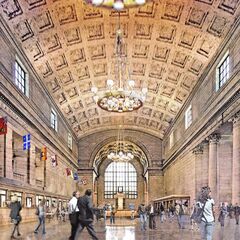I read documents like that and think about how it has always bothered me that our method of dealing with threats is a knee jerk response with no thought towards how one risk compares to another, how sustainable the solution is when applied more broadly, etc. This is not unique to public property, this is a way of working for security everywhere like IT, like response to health threats, etc. That document covers line-of-sight items to protect against shooter threats. We really need more risk auditors and people focused on a sustainability focused view to deal with these problems. Knee jerk reactions happen far too often and people take their focus off of much more important considerations. Obviously the more something happens, the greater the risk is of happening based on the data... but 1 data point is enough for knee jerk reactions, but it isn't enough to make that knee jerk reaction a sensible precaution or enough to say one couldn't have predicted that there was some measure of risk before it happened. The event that caused the barriers to go up didn't happen at Union Station... it happened on Yonge Street and there are many streets across Toronto with people walking on sidewalks with no jersey barriers... many streets where sidewalks are flush with the road.
Imagine what a purely data and modeling approach might say to silly ideas like "the best way to deal with a bad guy with a gun is a good guy with a gun"? Never mind that capitol hill has metal detectors to keep out good guys with guns. The place that says guns are a right doesn't allow good guys to carry guns. How does it make any sense? Make the airport safer and let more good guys with guns enter the airport? I would love someone to take metal detectors and public facilities and institutions that use them to the supreme court for violating their 2nd amendment right so we can hear an argument on how less guns makes those places safer but somehow that less guns everywhere else reduces safety.
I got a little off topic but the same logical thinking needs to apply everywhere. Bollards were already planned here because the road lacked high curbs paving that made the domain for vehicles and pedestrians less obvious, and they botched the selection with bollards that can't handle taxi's backing up at 5km/h. We just need normal bollards that can handle cars hitting them. There are videos of bollards that retract to let buses pass where you can watch the result of drivers trying to sneak in despite the warning signs... that bollard strength is desirable but likely not necessary. Cost both install and maintain (after cars back into them), risk, and sustainability (i.e. could we afford to install these at all the other places with a similar risk profile) should be considered.



















